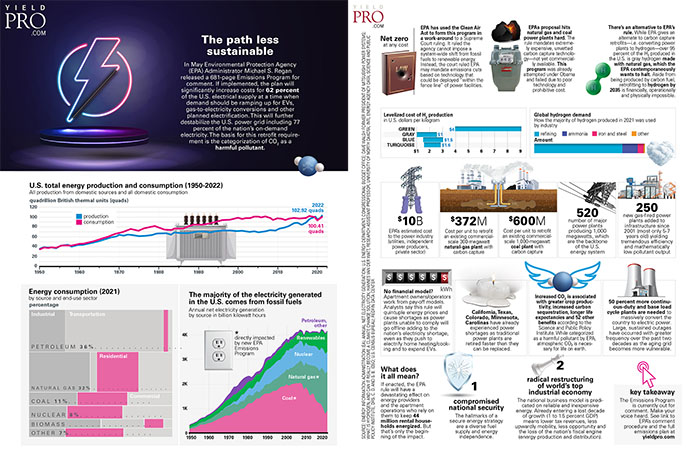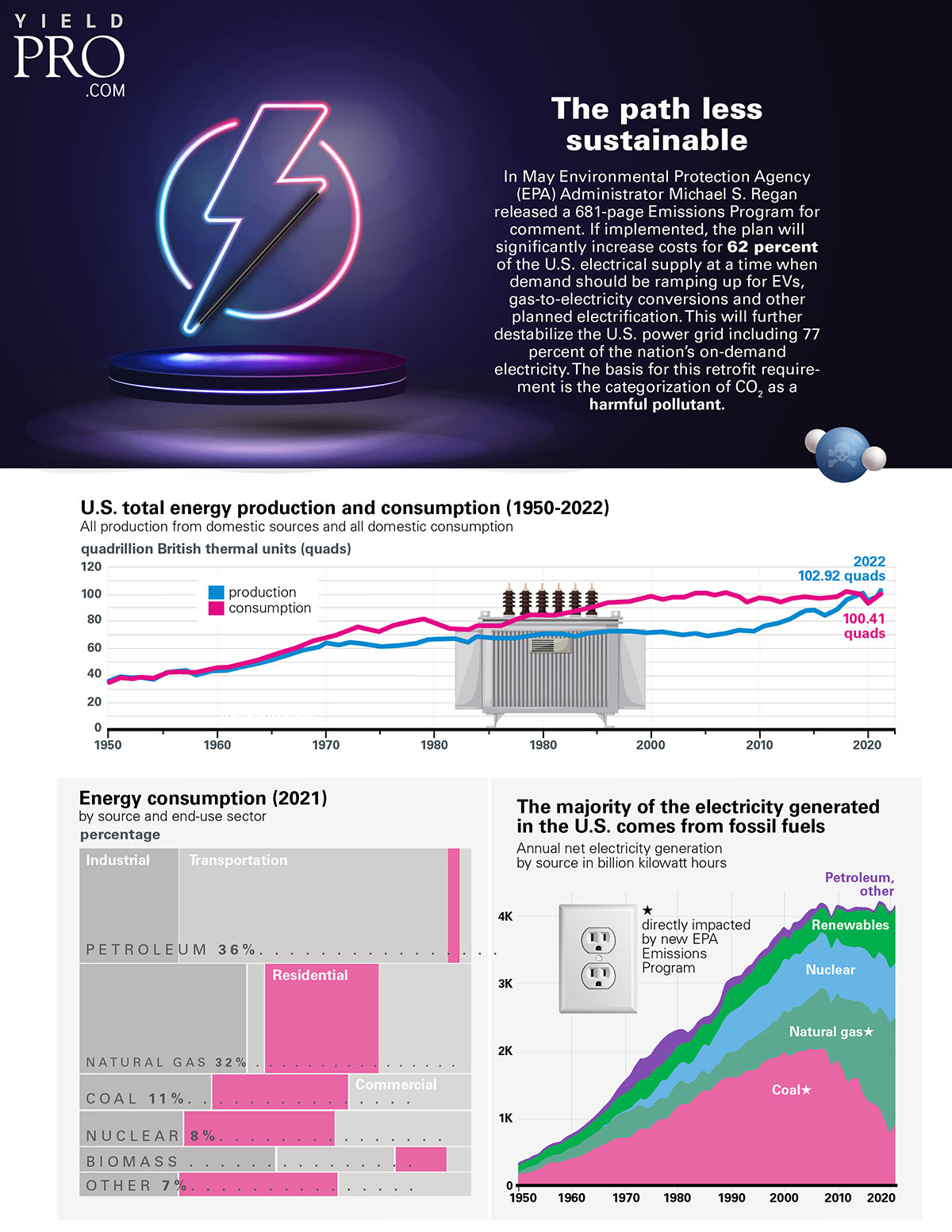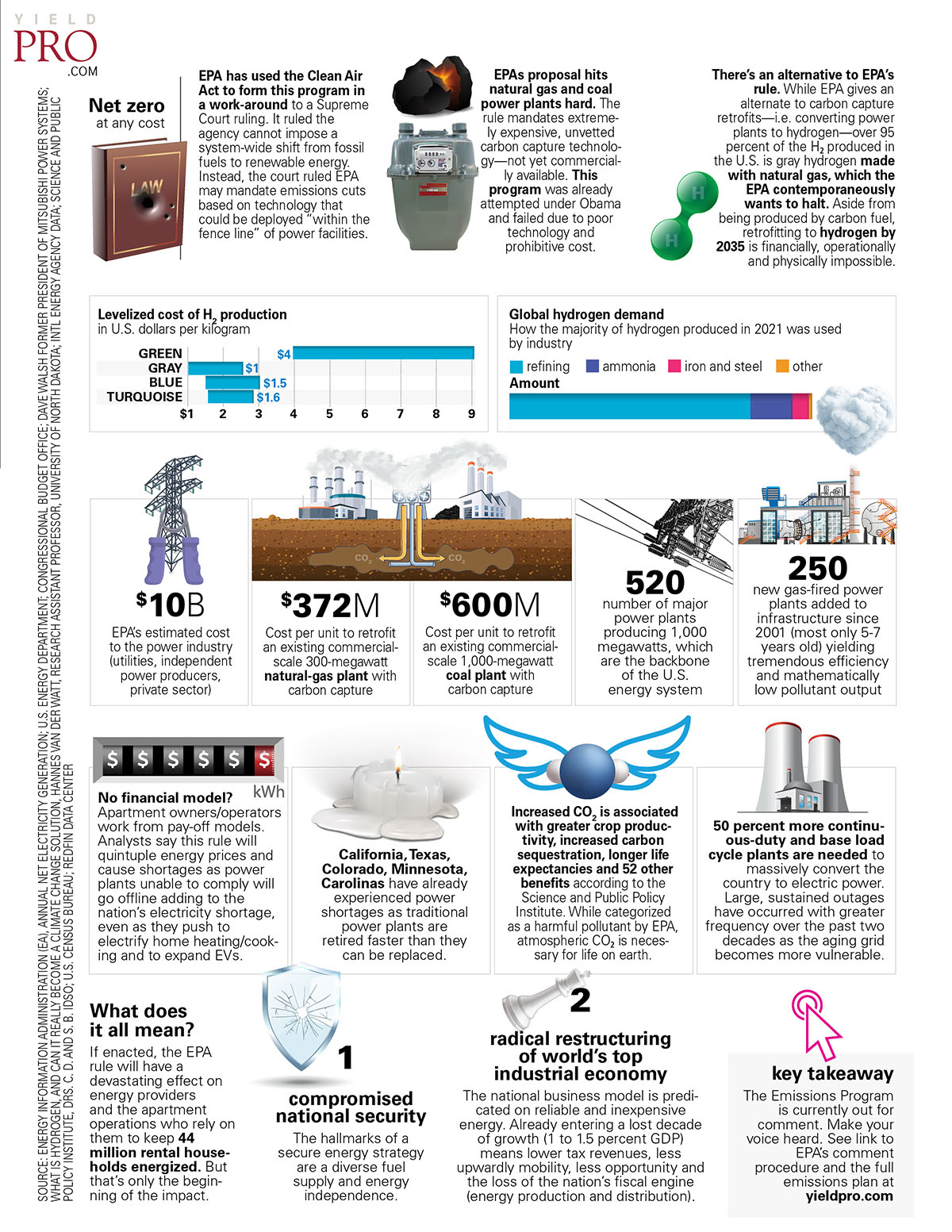In May Environmental Protection Agency (EPA) Administrator Michael S. Regan released a 681-page Emissions Program for comment. If implemented, the plan will significantly increase costs for 62 percent of the U.S. electrical supply at a time when demand should be ramping up for EVs, gas-to-electricity conversions and other planned electrification. This will further destabilize the U.S. power grid including 77 percent of the nation’s on-demand electricity. The basis for this retrofit requirement is the categorization of CO2 as a harmful pollutant.
Net zero at any cost
EPA has used the Clean Air Act to form this program in a work-around to a Supreme Court ruling. It ruled the agency cannot impose a system-wide shift from fossil fuels to renewable energy. Instead, the court ruled EPA may mandate emissions cuts based on technology that could be deployed “within the fence line” of power facilities.
EPAs proposal hits natural gas and coal power plants hard. The rule mandates extremely expensive, unvetted carbon capture technology—not yet commercially available. This program was already attempted under Obama and failed due to poor technology and prohibitive cost.
There’s an alternative to EPA’s rule. While EPA gives an alternate to carbon capture retrofits—i.e. converting power plants to hydrogen—over 95 percent of the H₂ produced in the U.S. is gray hydrogen made with natural gas, which the EPA contemporaneously wants to halt. Aside from being produced by carbon fuel, retrofitting to hydrogen by 2035 is financially, operationally and physically impossible.
$10 billion EPA’s estimated cost to the power industry (utilities, independent power producers, private sector)
$372 million Cost per unit to retrofit an existing commercial- scale 300-megawatt natural-gas plant with carbon capture
$600 million Cost per unit to retrofit an existing commercial- scale 1,000-megawatt coal plant with carbon capture
520 number of major power plants producing 1,000 megawatts, which are the backbone of the U.S. energy system
250 new gas-fired power plants added to infrastructure since 2001 (most only 5-7 years old) yielding tremendous efficiency and mathematically low pollutant output
No financial model?
Apartment owners/operators work from pay-off models. Analysts say this rule will quintuple energy prices and cause shortages as power plants unable to comply will go offline adding to the nation’s electricity shortage, even as they push to electrify home heating/cooking and to expand EVs.
California, Texas, Colorado, Minnesota, Carolinas have already experienced power shortages as traditional power plants are retired faster than they can be replaced.
Increased CO2 is associated with greater crop productivity, increased carbon sequestration, longer life expectancies and 52 other benefits according to the Science and Public Policy Institute. While categorized as a harmful pollutant by EPA, atmospheric CO₂ is necessary for life on earth.
50 percent more continuous-duty and base load cycle plants are needed to massively convert the country to electric power. Large, sustained outages have occurred with greater frequency over the past two decades as the aging grid becomes more vulnerable.
What does it all mean?
If enacted, the EPA rule will have a devastating effect on energy providers and the apartment operations who rely on them to keep 44 million rental households energized. But that’s only the beginning of the impact.
Compromised national security
The hallmarks of a secure energy strategy are a diverse fuel supply and energy independence.
Radical restructuring of world’s top industrial economy
The national business model is predicated on reliable and inexpensive energy. Already entering a lost decade of growth (1 to 1.5 percent GDP) means lower tax revenues, less upwardly mobility, less opportunity and the loss of the nation’s fiscal engine (energy production and distribution).
Key takeaway
The Emissions Program is currently out for comment. Make your voice heard. See link to EPA’s comment procedure and the full emissions plan.

















